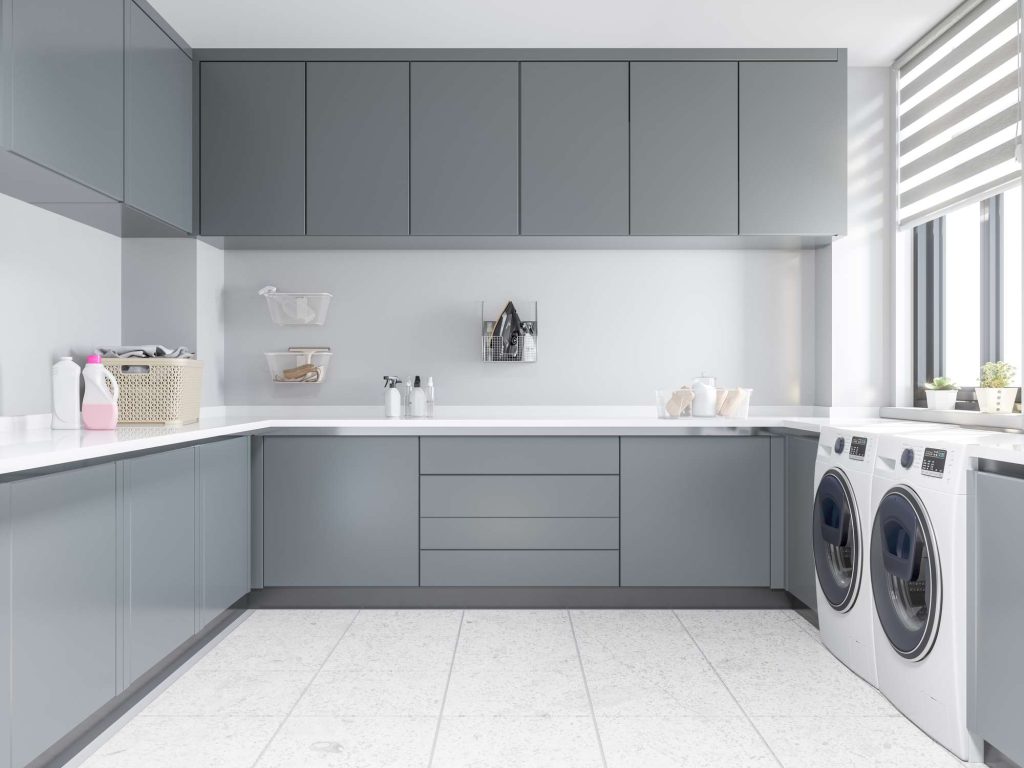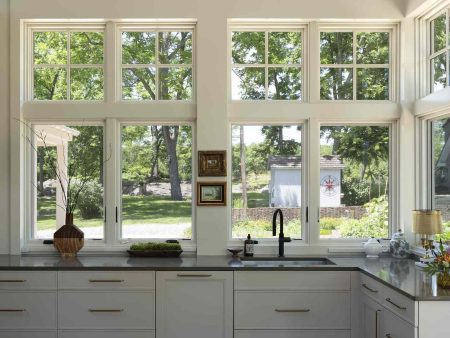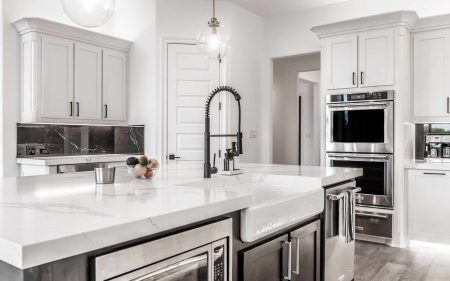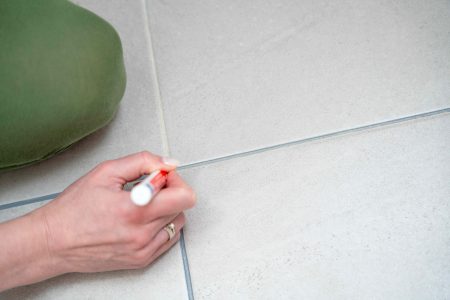When you want to remodel a laundry room, careful planning is essential to creating a space that is cost-effective, functional, attractive, and simple to use. Learn the basics of laundry room remodeling such as locating the laundry room, laundry room layouts, the cost of remodeling a laundry room, and more.
Where to Locate the Laundry Room
Where do you want to place the laundry room? The location may be apparent—a dedicated laundry room space, for example—but in other cases, you may have to roam the house to find the perfect spot.
Dedicated Laundry Room Space
When your home already has a dedicated space for a laundry room, you’ll need to have a compelling reason to place the laundry room anywhere but here. The difficult and expensive job of installing water, drainage, gas, and electrical connections is complete. Not only that but it can be difficult to transform a single-purpose space such as this into a room for other uses.
Laundry Room in Basements
Homes with a basement offer another opportunity for carving out an area for the laundry room. Basements have the advantage of moving noisy laundry operations out of the living areas. In the event of flooding, water is contained in the basement.
Laundry Room Near the Kitchen
Placing a laundry room near a kitchen takes advantage of the rich collection of utilities in that area: 120V electricity for the washer; possible 240V electricity for the dryer; natural gas; sewer and drainage.
Laundry Room Upstairs
Placing the laundry room upstairs in the living areas makes it more convenient to integrate washing and drying clothes into your normal routine.
Choosing a Washer and Dryer
The washer and dryer form the core of the laundry room. So, it can be wise to start early to shop for a washing machine and for a dryer.
It’s your choice: Will the machines determine the layout and design of the laundry room or will the washer and dryer fit into a pre-determined plan? If you have ample space to work with, you may want to start with the appliances and design the laundry room around them.
Plan the Laundry Room Layout
Once you have decided on a space, you will need to decide on the laundry room layout, or footprint, within that space. A galley or corridor style laundry room is a long, narrow room with machines and cabinets on one side. In larger spaces, an L-shaped laundry room layout gives you more countertop space for folding clothes.
Design the Laundry Room
Home interiors often get the style treatment, while the laundry room is ignored. Break from the norm and design your laundry room to match your home’s style or to create a new treatment altogether. Find a paint color for your laundry room to catch attention and inspire or to calm and soothe.
How Much It Costs to Remodel a Laundry Room
Decide in advance how much you can spend on your laundry room remodel. Breaking the decision into three tiers makes the choice easier: low-cost, mid-range cost, and high-cost.
- Low: A low-cost laundry room is mostly centered around adding cabinets, counters, and economical flooring. Expect to pay around $1,000 to $2,000 for a low-cost laundry room remodel.
- Mid: A mid-range remodel will give you the full complement of cabinets and countertops, as well as better-quality flooring. You will pay between $4,000 and $12,000 for a mid-range laundry room remodel.
- High: A high-cost remodel may include any of the previous items, plus a layout change, premium cabinets, quartz countertops, and loads of extras. A high-end laundry room remodel will cost $15,000 or more.
Build Laundry Room Storage
A smart system of cabinets is at the heart of a well-organized laundry room. Floor-mounted base cabinets and wall cabinets—just like the cabinets found in kitchens—can store a majority of the laundry room’s items. But don’t neglect easy storage solutions like open shelves.
Choose the Right Laundry Room Flooring
The question is not if water will find its way to the laundry room floor but when it will. Laundry rooms are rife with moisture: water from the washer basin, water from the outlet hose, and water in the form of moist, humid air.
Limit or eliminate damage from water intrusion by choosing a type of flooring that resists moisture and retains its dimension if soaked. Sheet vinyl, luxury vinyl, ceramic and porcelain tile, and concrete floors work well in laundry rooms.
Laminate flooring, hardwood flooring, and engineered wood flooring are susceptible to moisture and can become irreparably damaged. If you decide to use these flooring materials, safeguard against damage by mopping up pooled water quickly, using tray pans, and frequently checking water supply hoses for leaks. Protect against catastrophic flooding by installing a floor drain.
Select Laundry Room Countertops
Strike the perfect balance between function, style, and price by choosing the right countertops to be installed on the base cabinets.
High-end quartz or engineered stone counters are smooth, solid, and they return excellent resale value but are expensive.
Laminate and solid surface counters are less expensive yet equally smooth and ideal for folding clothing.
Install a Laundry Room Sink
A laundry room sink, or utility sink, is an option that allows you to clean especially dirty clothing or to pre-soak clothing. It is a bonus that many homeowners love, too, since it can be used for cleaning any dirty item that shouldn’t be cleaned in your home’s other sinks—paintbrushes, muddy boots, car parts.
A freestanding polypropylene utility sink is inexpensive and can be installed by most do-it-yourselfers. For a smoother look and extra convenience, consider a stainless steel or enamel-coated cast-iron sink that either drops in or mounts under your countertops.
Accessorize Your Laundry Room
Round off your completed and fully remodeled laundry room with gadgets and accessories that make wash day easier and more enjoyable, such as:
- Ironing board hanger
- Fun removable stickers on the washer and dryer
- Do-it-yourself rope hamper
- Dry-erase decal lists
Read the full article here









